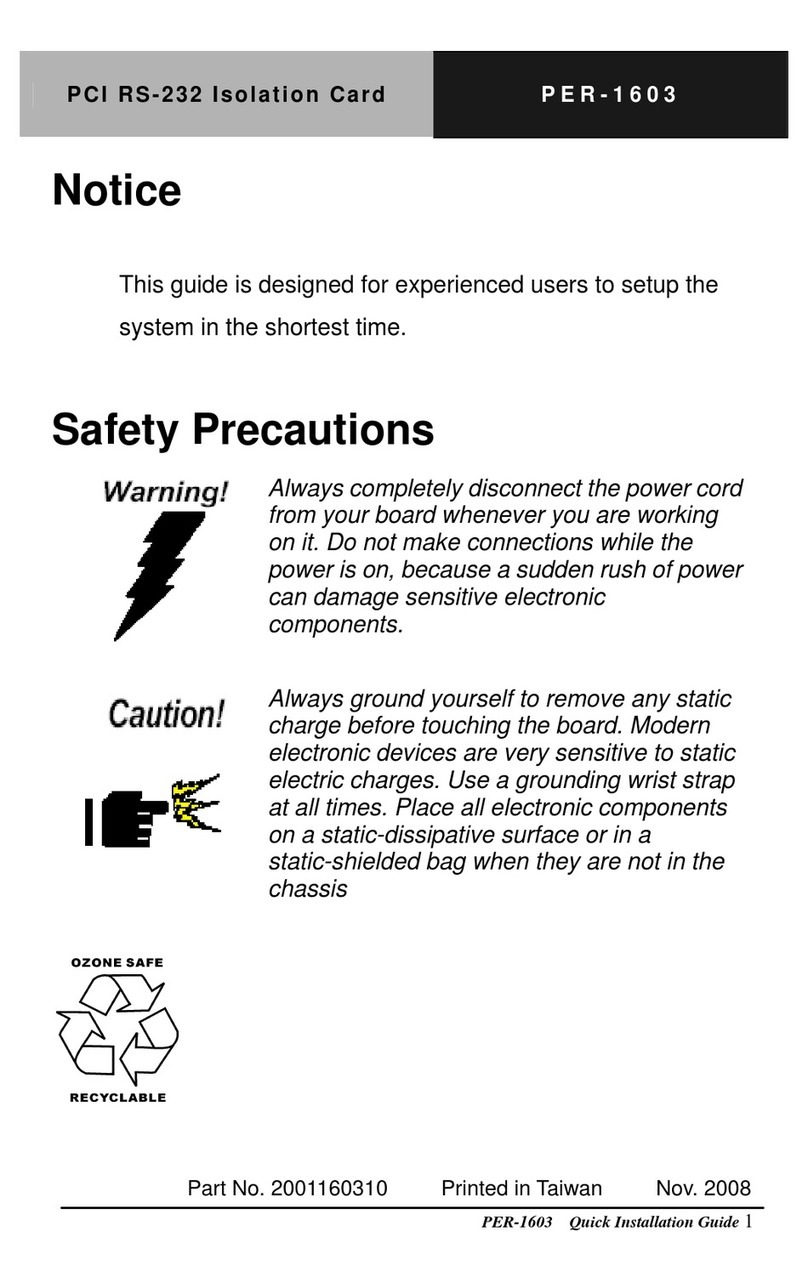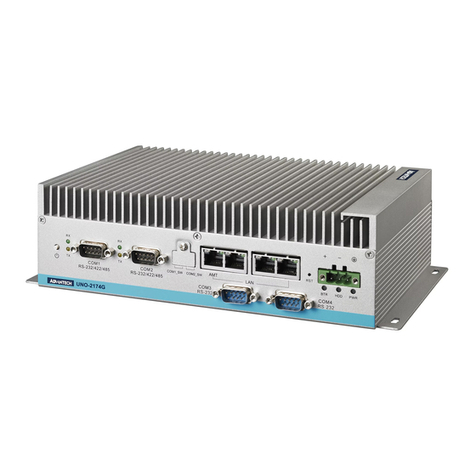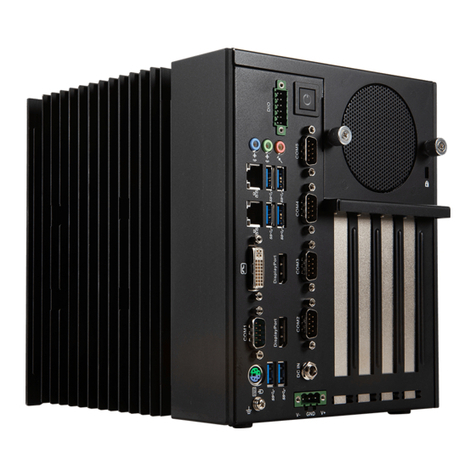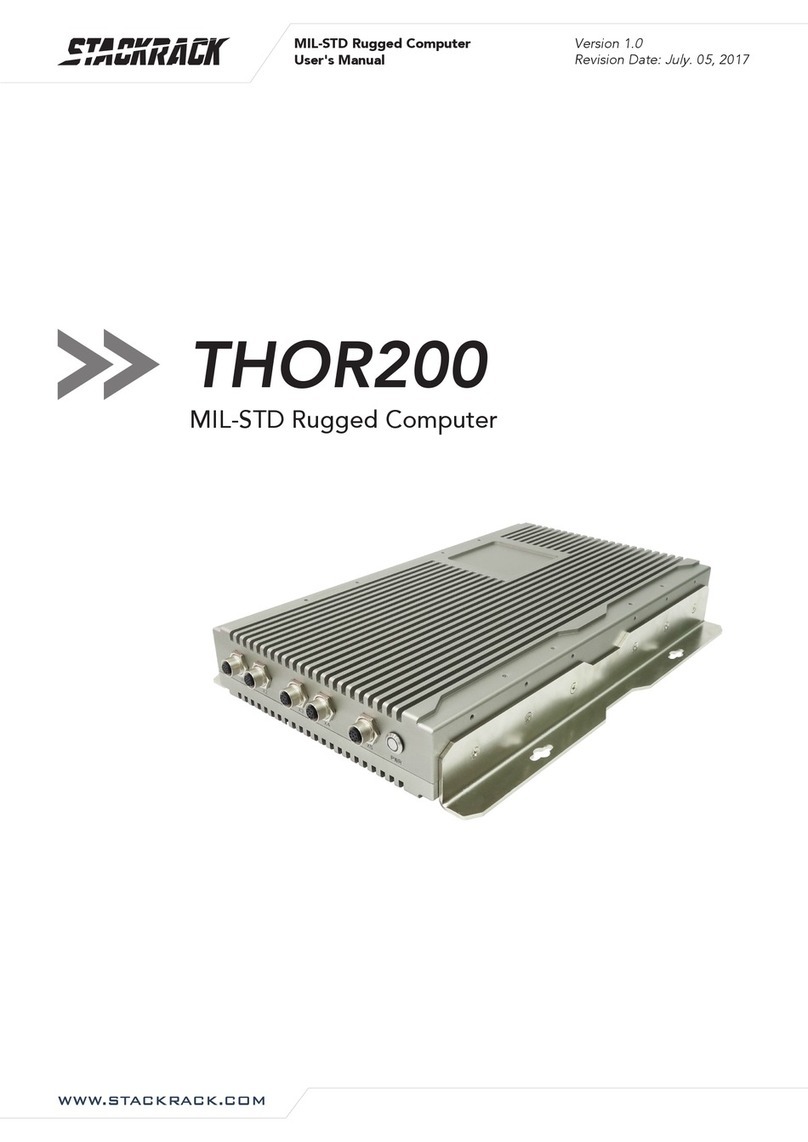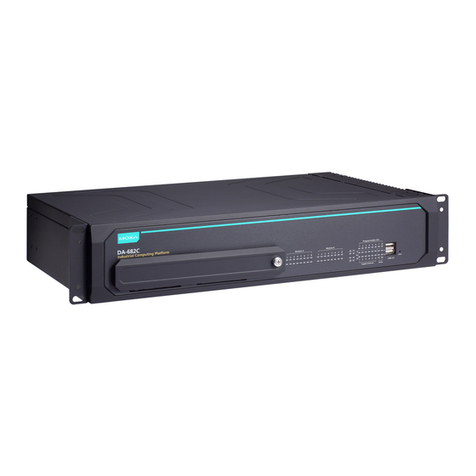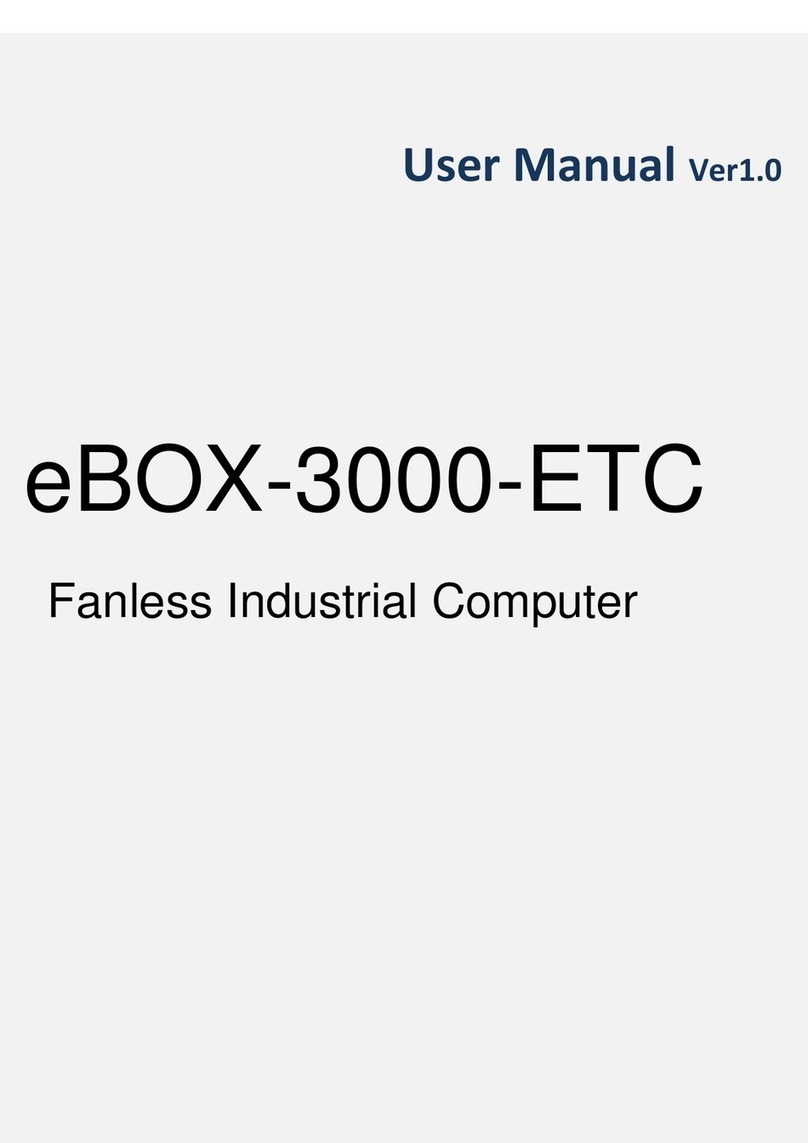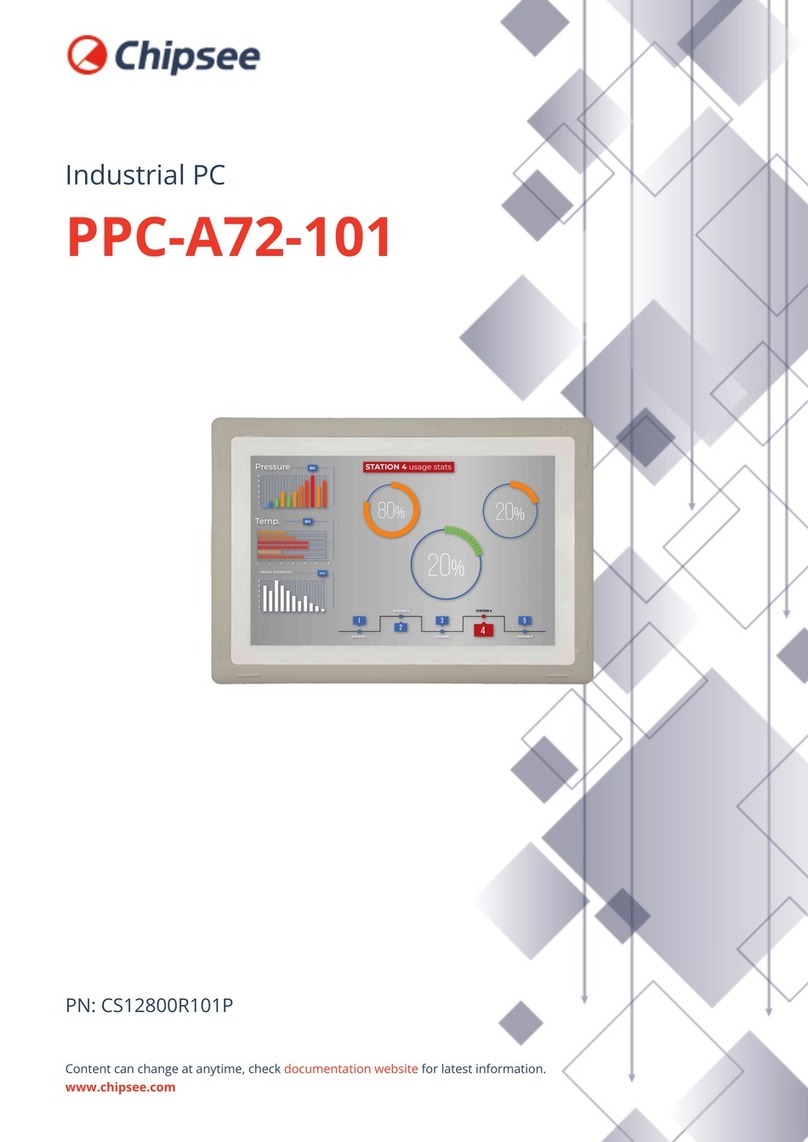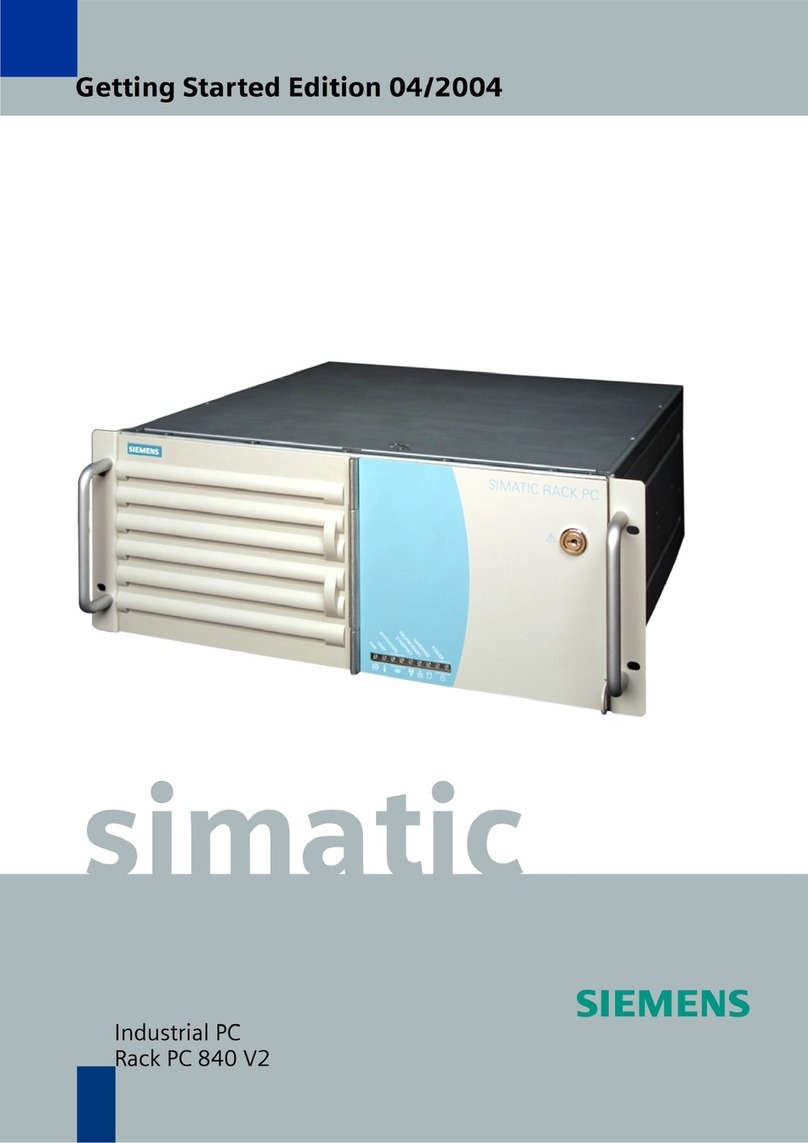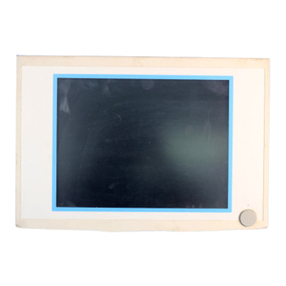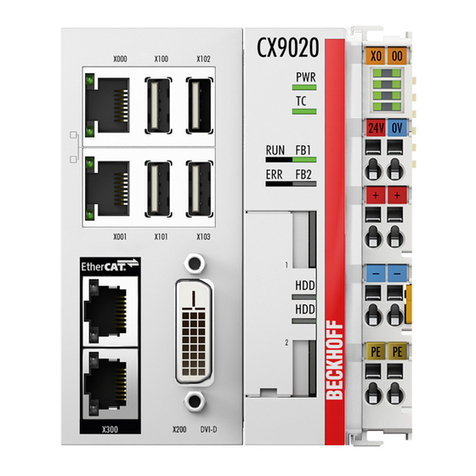Star Lake SR700-X3 User manual

1
SR700-X3
IP65 MIL-STD-810G Rugged Computer

1
SR700-X3 User’s Manual
Safety Information
Electrical safety
To prevent electrical shock hazard, disconnect the power cable from the electrical outlet before relocating the
system.
When adding or removing devices to or from the system, ensure that the power cables for the devices are
unplugged before the signal cables are connected. If possible, disconnect all power cables from the existing
system before you add a device.
Before connecting or removing signal cables from the motherboard, ensure that all power cables are unplugged.
Seek professional assistance before using an adapter or extension cord. These devices could interrupt the
grounding circuit.
Make sure that your power supply is set to the correct voltage in your area.
If you are not sure about the voltage of the electrical outlet you are using, contact your local power company.
If the power supply is broken, do not try to fix it by yourself. Contact a qualified service technician or your local
distributor.
Operation safety
Before installing the motherboard and adding devices on it, carefully read all the manuals that came with the
package.
Before using the product, make sure all cables are correctly connected and the power cables are not damaged. If
you detect any damage, contact your dealer immediately.
To avoid short circuits, keep paper clips, screws, and staples away from connectors, slots, sockets and circuitry.
Avoid dust, humidity, and temperature extremes. Do not place the product in any area where it may become
wet.
Place the product on a stable surface.
If you encounter any technical problems with the product, contact your local distributor
Statement
All rights reserved. No part of this publication may be reproduced in any form or by any means, without prior
written permission from the publisher.
All trademarks are the properties of the respective owners.
All product specifications are subject to change without prior notice

2
SR700-X3 User’s Manual
Revision History
Revision
Date (yyyy/mm/dd)
Changes
V1.0
2019/10/16
First release
V2.0
2020/6/5
Upgrade Motherboard
Packing list
If any of the above items is damaged or missing, please contact your local distributor.

3
SR700-X3 User’s Manual
TableContents
Safety Information ................................................................................................................................. 1
Revision History........................................................................................................................................... 2
Packing list ................................................................................................................................................... 2
Table Contents............................................................................................................................................. 3
Chapter 1: Product Introduction ............................................................................................................ 5
1.1
Specifications ..................................................................................................................... 5
1.2
Dimensions......................................................................................................................... 7
1.3
Panel Component............................................................................................................... 8
Chapter 2: Connector pin definition....................................................................................................... 9
2.1 DC-IN Power Connector………………………………………………………………………………………………..9
2.2 LAN (X1,X2)……………………………………………………………………………………………………………………9
2.3 USB2.0 (X3)……………………………………………………………………………………………………………………9
2.4 VGA (X4)……………………………………………………………………………………………………………………….10
2.5 COM, RS232+RS485 (X5)………………………………………………………………………………………………10
Appendix
1. TEST Power cable…………………………………………………………………………………………………………11
2. TEST LAN cable……………………………………………………………………………………………………………..11
3. TEST USB2.0 cable………………………………………………………………………………………………………..11
4. TEST VGA cable…………………………………………………………………………………………………………….12
5. TEST COM cable……………………………………………………………………………………………………………12
Chapter 3: AMI BIOS UTILITY……………………………………………………………………………………………………………..13
3.1 Starting……………………………………………………………………………………………………………………….13
3.2 Navigation Keys…………………………………………………………………………………………………………..13
3.3 Main Menu………………………………………………………………………………………………………………….14
3.4 Advanced Menu………………………………………………………………………………………………………….14
3.4.1 CPU Configuration…………………………………………………………………………………………………….15
3.4.2 Power & Performance………………………………………………………………………………………………15
3.4.3 PCH-FW Configuration………………………………………………………………………………………………16
3.4.4 ACPI Setting………………………………………………………………………………………………………………16
3.4.5 IT8786 Super IO Configuration………………………………………………………………………………….17
3.4.6 Hardware Monitor……………………………………………………………………………………………………19
3.4.7 CSM Configuration……………………………………………………………………………………………………20
3.5 Chipset………………………………………………………………………………………………………………………..20
3.5.1 SA Configuration………………………………………………………………………………………………………21

4
3.5.1.1 Graphics Configuration………………………………………………………………………………………….21
3.5.1.2 LCD Control……………………………………………………………………………………………………………22
3.5.2 PCH-IO Configuration……………………………………………………………………………………………….22
3.6 Security……………………………………………………………………………………………………………………….23
3.7 Boot…………………………………………………………………………………………………………………………….23
3.8 Save & Exit…………………………………………………………………………………………………………………..24

5
SR700-X3 User’s Manual
Chapter 1: Product Introduction
1.1
Specifications
System
High Power
Processor
i7-7820EQ
Intel® 7th Gen Core™ i7-7820EQ (Frequency 3.0GHz, Turbo Boost
Frequency up to 3.7GHz), Quad-Core, 8 Thread Support, 8MB
SmartCache.
Memory type
Up to 32GB DDR4 SDRAM
Expansion Slot
1 x Full-size mPCIe ( w/ SIM card supported )
1 x Full-size mPCIe ( w/ mSATA supported )
1 x M.2 ( M-Key ), 2280 storage devices support ( SATA )
Display
VGA
Intel® HD Graphics 530/630
Optional : NVidia® GTX1050 TI MXM graphics
Resolution up to 1920x1200@60Hz or 2048x1152@60Hz with reduced
blanking
Storage
mSATA
1 x Full-size mPCIe up to 512 GB
M.2
Up to 1TB
Ethernet
2 x Intel Gigabit Ethernet LAN Interfaces ( 10/100/1000Mbps )
FRONT I/O
VGA
1 x Rugged M12 connector
USB
1 x Rugged M12 connector ( 2 x USB 2.0 Ports )
Serial Port
1 x Rugged M12 connector ( 1 x RS-232, 1 x RS-485 )
Ethernet
2 x Rugged M12 connectors
DC-IN
1 x Rugged M12 connector
Applications, Operating System
Applications
Commercial and Military Platforms Requiring Compliance to MIL-STD-
810G
Embedded Computing, Process Control, Intelligent Automation and
manufacturing applications where Harsh Temperature, Shock, Vibration,
Altitude, Dust and EMI Conditions. Used in all aspects of the military
Operating System
Windows 10 32/64Bit
Ubuntu13.04, Ubuntu13.10, Ubuntu14.04, Fedora 20

6
Physical
Dimension
350 x 230 x 86 mm
Weight
8.6 Kg ( 18.9 lbs )
Chassis
SECC
Heatsink
Aluminum Alloy, Corrosion Resistant
Finish
Anodic aluminum oxide ( Color Iron gray )
Cooling
Natural Passive Convection/Conduction. No Moving Parts.
Connectors
DC-IN : Phoenix Contact 1424136
Ethernet : Phoenix Contact 1424177
VGA : Phoenix Contact 1441833
USB : Phoenix Contact 1424177
COM : Phoenix Contact 1441833
Ingress Protection
IP65
Mechanical and
Environment
Reliability
No Moving Parts; Passive Cooling.
Designed & Manufactured using ISO 9001/2000 Certified Quality
Program.
Operating Temp
-40°C to 60°C
Storage Temp.
-40°C to 85°C
Certification
MIL-STD-810G Test
Operating Tests
Low Temperature
Method 502.5
Procedure 2
exposure(24h x 3 cycle) at -40℃
min.
High Temperature
Method 501.5
Procedure 2
60ºC for 2 hours after
temperature stabilization.
Humidity
Method 507.5
Procedure 2
RH -95%. Test cycles: ten 24-
hours , functional test after 5th
and 10th cycles
Vibration
Method 514.6
Category 20
10—500Hz 1.04Grms
Test duration: 1 hours x 3 axis
(total 3 hours)
Shock
Method 516.6
Procedure 1
20G, 11mSec, 3 per axis
Non-Operating Tests
Low Temperature
Storage
Method 502.5
exposure(24h x 7 cycle) at -40℃
min.
High Temperature
Storage
Method 501.5
Procedure 1
71ºC for 2 hours after
temperature stabilization.
Vibration
Method 514.6
Category 24
200 to 2000Hz
Test duration: One hour per axis;
rms = 7.7 gs
Shock
Method 516.6
Procedure V
40G, 11ms, 3 pluse.
EMC
CE, FCC compliant
Green Product
RoHS, WEEE compliance

7
SR700-X3 User’s Manual
1.2
Dimensions

8
SR700-X3 User’s Manual
1.3
Panel Component

9
SR700-X3 User’s Manual
Chapter 2: Connector pin definition
2.1 DC-IN Power Connector

10
SR700-X3 User’s Manual

11
SR700-X3 User’s Manual

12
SR700-X3 User’s Manual

13
Chapter 3: AMI BIOS UTILITY
This chapter provides users with detailed descriptions on how to set up a basic system configuration through
the AMI BIOS setup utility.
3.1 Starting
To enter the setup screens, perform the following steps:
•Turn on the computer and press the <Del> key immediately.
•After the <Del> key is pressed, the main BIOS setup menu displays. Other setup screens can be accessed
from the main BIOS setup menu, such as the Chipset and Power menus.
3.2 Navigation Keys
The BIOS setup/utility uses a key-based navigation system called hot keys. Most of the BIOS setup utility hot
keys can be used at any time during the setup navigation process.
Some of the hot keys are <F1>, <F10>, <Enter>, <ESC>, and <Arrow> keys.
Some of the navigation keys may differ from one screen to another.
Left/Right
The Left and Right <Arrow> keys moves the cursor to select a
menu.
Up/Down
The Up and Down <Arrow> keys moves the cursor to select a
setup screen or sub-screen.
+− Plus/Minus
The Plus and Minus <Arrow> keys changes the field value of a
particular setup setting.
Tab
The <Tab> key selects the setup fields.
F1
The <F1> key displays the General Help screen.
F10
The <F10> key saves any changes made and exits the BIOS setup
utility.
Esc
The <Esc> key discards any changes made and exits the BIOS
setup utility.
Enter
The <Enter> key displays a sub-screen or changes a selected or
highlighted option in each menu.

14
3.3 Main Menu
The Main menu is the screen that first displays when BIOS Setup is entered, unless an error has occurred.
System Date
Use this function to change the system date.
Select System Date using the Up and Down <Arrow> keys. Enter the new values through the keyboard. Press
the Left and Right <Arrow> keys to move between fields.
The date setting must be entered in MM/DD/YY format.
System Time
Use this function to change the system time.
Select System Time using the Up and Down <Arrow> keys. Enter the new values through the keyboard. Press
the Left and Right <Arrow> keys to move between fields.
The time setting is entered in HH:MM:SS format.
Note: The time is in 24-hour format. For example, 5:30 A.M. appears as 05:30:00, and 5:30 P.M. as 17:30:00.
Access Level
Display the access level of the current user in the BIOS.
3.4 Advanced Menu
The Advanced Menu allows you to configure your system for basic operation. Some entries are defaults
required by the system board, while others, if enabled, will improve the performance of your system or let you
set some features according to your preference. Setting incorrect field values may cause the system to
malfunction.

15
3.4.1 CPU Configuration
3.4.2 Power & Performance

16
3.4.3 PCH-FW Configuration
3.4.4 ACPI Setting

17
3.4.5 IT8786 Super IO Configuration
User can choose a mode (RS232/RS422/RS485) on each serial port.

18

19
3.4.6 Hardware Monitor
Other manuals for SR700-X3
1
Table of contents
Other Star Lake Industrial PC manuals
Popular Industrial PC manuals by other brands
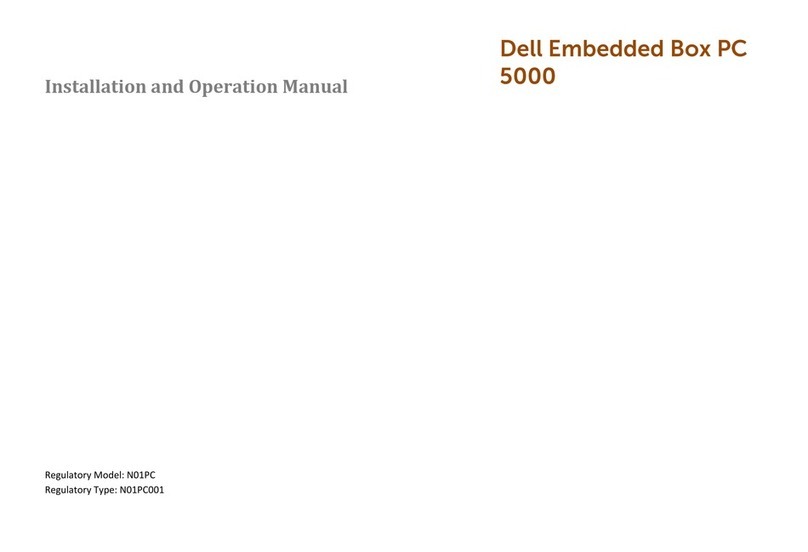
Dell
Dell Embedded Box PC 5000 Installation and operation manual
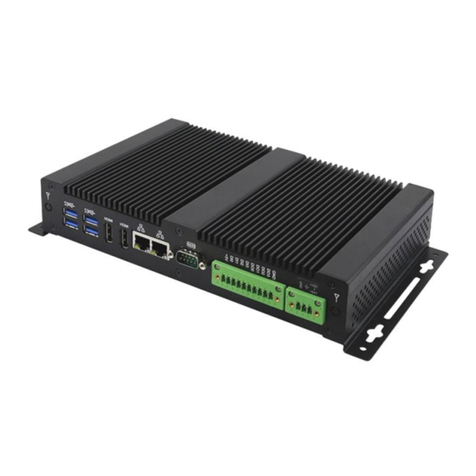
IBASE Technology
IBASE Technology ASB200-918 Series user manual
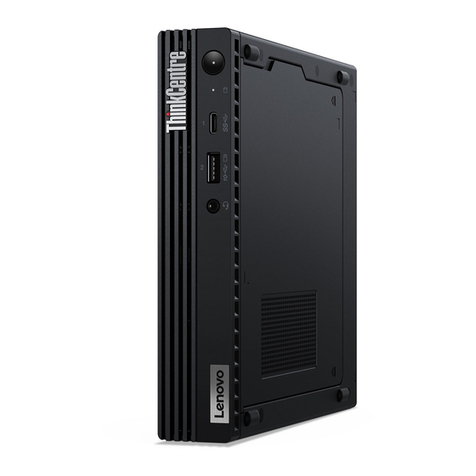
Lenovo
Lenovo ThinkCentre M90q Hardware Maintenance Manual
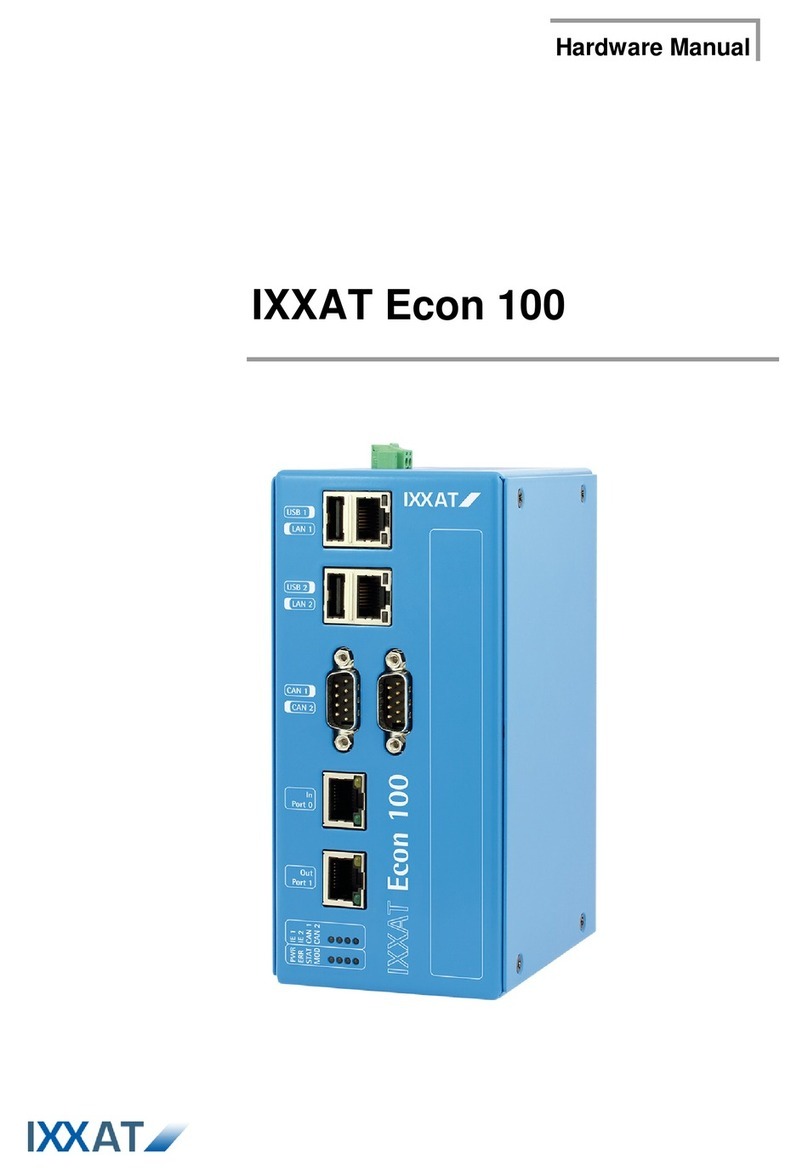
IXXAT
IXXAT Econ 100 Hardware manual
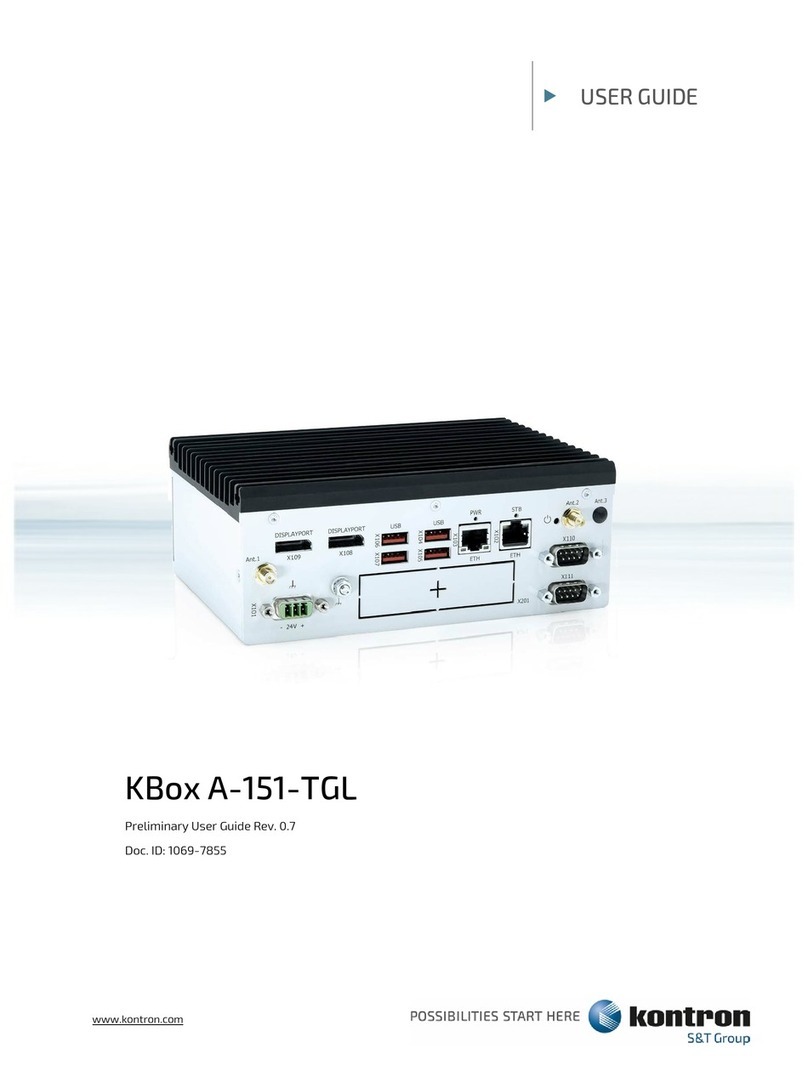
Kontron
Kontron KBox A-151-TGL user guide
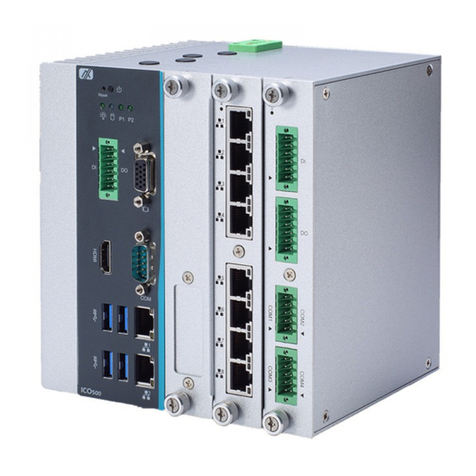
AXIOMTEK
AXIOMTEK ICO500-518 Series user manual


